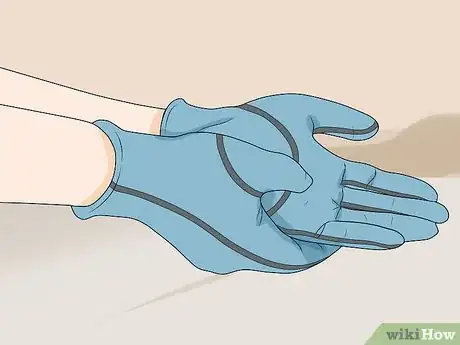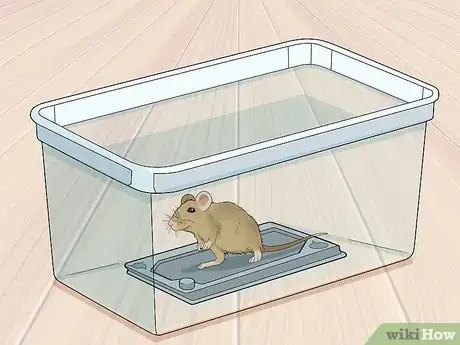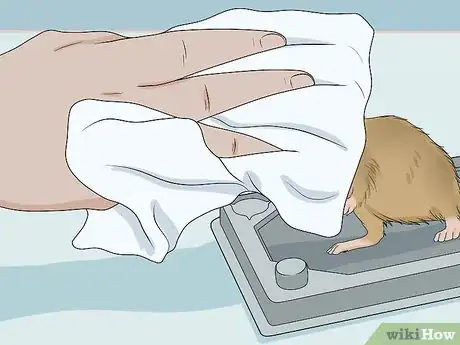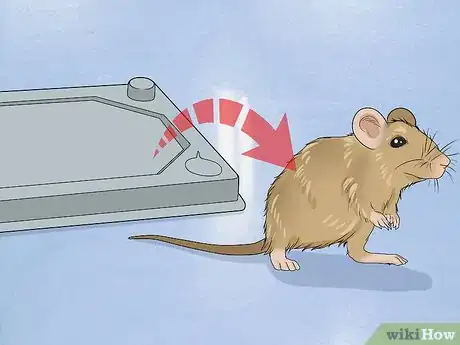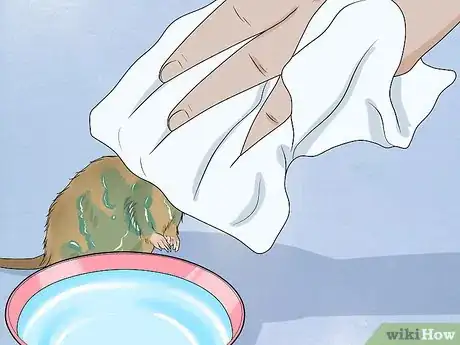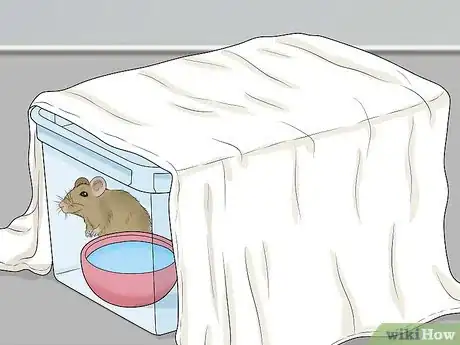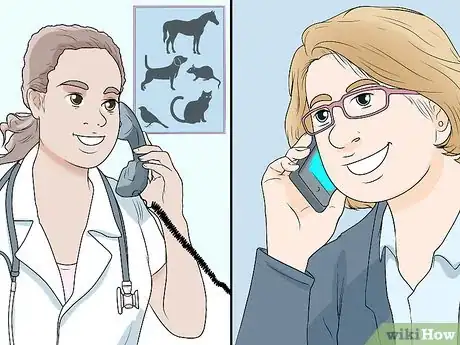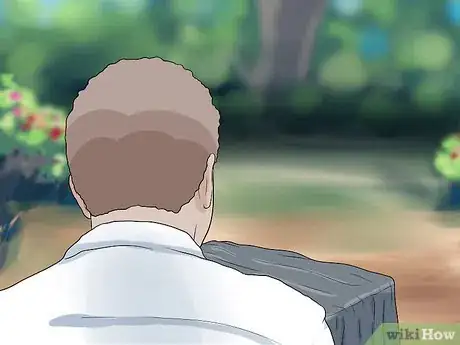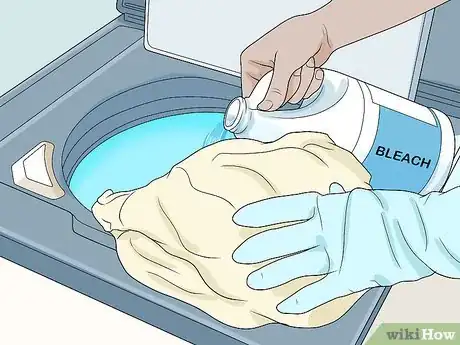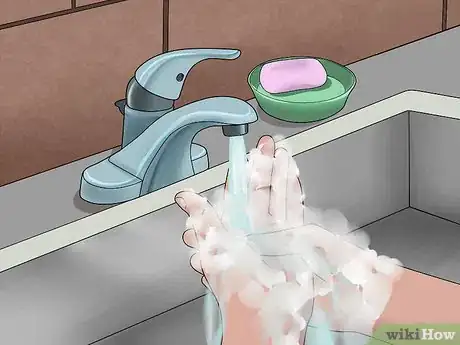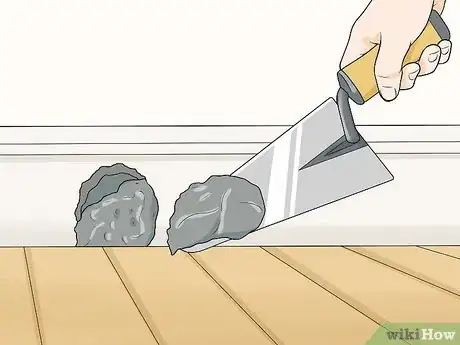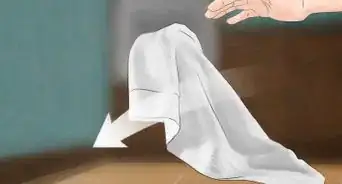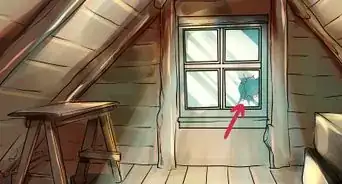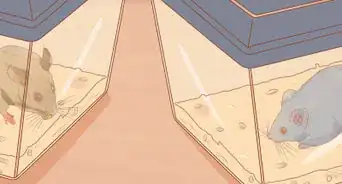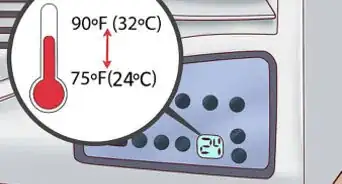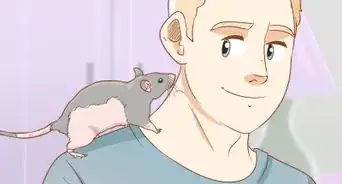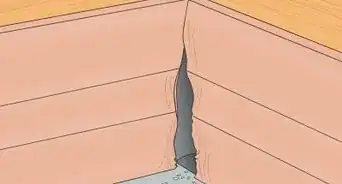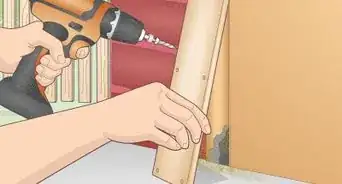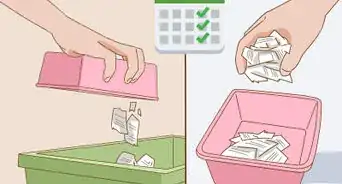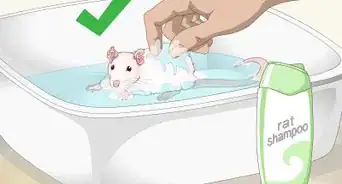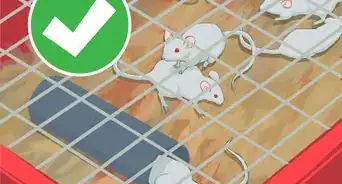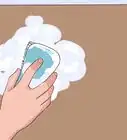This article was co-authored by Chris Parker. Chris Parker is the Founder of Parker Eco Pest Control, a sustainable pest control service in Seattle, Washington. With over seven years of experience, Chris specializes in Integrated Pest Management and doesn’t use any chemicals for pest removal. He offers removal services for ants, rodents, fleas, spiders, wasps, and more. Chris is a certified Commercial Pesticide Applicator in Washington State and received his bachelor’s from the University of Washington.
wikiHow marks an article as reader-approved once it receives enough positive feedback. This article received 15 testimonials and 84% of readers who voted found it helpful, earning it our reader-approved status.
This article has been viewed 669,923 times.
Glue traps are a type of rodent trap that some people use to catch mice, rats, and other critters. The trap is a sheet covered with a very sticky adhesive, and this type of trap can be a danger to pets, children, wildlife, and all creatures that encounter them. Animals caught in a glue trap will die a long and painful death from exhaustion, starvation, dehydration, from injuries, or exposure if they aren't rescued.[1] Luckily, if you find a mouse or other animal that’s been caught in a glue trap, releasing the animal is quite simple, and the trick is to use vegetable oil to loosen the glue.
Steps
Getting the Mouse Off Unharmed
-
1Protect yourself with gloves. Rodents can carry dangerous diseases and transmit them to humans. To protect yourself from bites, scratches, and contamination, it’s important that you wear a pair of thick gloves.[2]
- Good gloves for this job include work gloves, gardening gloves designed for roses, or heavy-duty leather gloves.
-
2Place the mouse inside a container. Pick up the trap with the mouse and gently transfer it to a clear plastic container or box. The container should have surface dimensions a little greater than the sticky trap, and should be at least 4 inches (10.2 cm) deep.Advertisement
-
3Cover the mouse with a towel. Use an old rag or towel that you don’t mind throwing out afterward. Gently lay the towel over the mouse’s head to keep it calm.[3] Place one hand over the mouse near the shoulders and delicately hold the mouse in place while you work.
-
4Pour vegetable oil onto the trap. Concentrate the oil around where the mouse is stuck. Use as little oil as possible, and avoid getting oil on the mouse directly as much as you can. Use a cotton swab or cloth to massage the oil into the glue.
- You can use cooking spray or baby oil as a last resort, but liquid vegetable oil is ideal for this job.[4]
-
5Free the mouse. Continue massaging the area around the mouse for a few minutes. Eventually, the glue will begin to loosen and the mouse will be able to release itself from the trap. As soon as the mouse is free, remove the trap from the container.
- Dispose of the trap in a plastic bag, and seal the bag before transferring it to a garbage can.
-
6Wipe off excess oil. Soak an old rag or cloth with warm water and wring out the excess. Use the cloth to remove any excess oil that may be on the mouse’s paws, head, or body.
- Oil will prevent the mouse from regulating its body temperature, so it’s important to remove as much as possible.[5]
-
7Give the mouse time to rest. Place a small bowl of fresh water into the container with the mouse. Place a large towel over the container to make the inside of the box dark, warm, and quiet. Give the mouse at least an hour to rest and relax.[6]
-
8Call a wildlife rehabilitator or veterinarian. Whenever possible, the mouse should be released to a specialist for care. When it’s not possible to release the mouse to a wildlife rehabilitator or veterinarian, ask the specialist about what you can do regarding:
- Treating the mouse for oil
- Caring for the mouse
- Returning the mouse to the wild
Releasing the Mouse in the Wild
-
1Choose a nearby location. When you can’t release the mouse to an animal specialist, you can find a place in the wild to release the mouse. Whenever you catch a wild mouse near your house, you should always release it within 100 yards (91 m) of where you found it.[7]
- Releasing the mouse nearby will ensure it’s in familiar territory, and will be able to find food, water, and shelter.
- Ideal locations for release are nearby parks, forests, fields, or green spaces.
- In winter, consider leaving the mouse in your shed or garage until the weather is more suitable.
-
2Take the mouse to the location you’ve chosen. With the towel still covering the container, gently walk or drive the mouse to the location you’ve chosen for release. Avoid jostling the container as much as possible, as this will cause stress and panic.
-
3Set the mouse free. Place the container on the ground near some bushes, logs, deep grass, or other cover so the mouse can quickly find a safe place. Remove the towel, gently turn the box on its side, and take several steps back. When the mouse feels safe, it will leave the container and seek shelter.
-
4Disinfect your supplies. Throw out the towels and cloths you used to treat the mouse, or wash them all in a separate load in the washing machine with the gloves. Use a hot water cycle, and add bleach to disinfect everything. Use a disinfecting spray to clean the container, or throw out the box.
-
5Wash your hands. Turn on the taps and rinse your hands under running water. Apply soap and lather your hands with soap for at least 20 seconds. Make sure you get under your nails, the backs of your hands, and between your fingers. Rinse your hands under the water to rinse them off. Dry your hands with a clean towel.[8]
Keeping Mice Out of Your House
-
1Seal entry points into your house. Mice can squeeze through openings as small as a dime. Walk around your house and make note of any cracks, holes, vents, openings, or other access points. Seal these with metal or cement to keep mice and other rodents from entering.[9]
- It’s also a good idea to put screens around chimneys, to use weather stripping on doors and windows, and to repair all window screen holes.
-
2Eliminate shelters and hiding places. Mice and other rodents often hide or make homes in woodpiles, shrubbery, and other items that are stored near your house. Keep shrubs and long grass trimmed, trim branches that are overhanging your roof, and store firewood, barbecues, patio furniture, and other items at least 20 feet away from your house.[10]
-
3Remove food and water sources. Mice will eat all sorts of things, including scraps, garbage, crumbs, pet food, seeds, fruit, and more. To ensure mice don’t find a food source in or around your home, there are many steps you can take:[11]
- Store food in airtight glass containers
- Clean floors, counters, and pantries regularly
- Store pet-food and trash in rodent-proof containers
- Clean up fallen birdseed
- Pick fresh fruits and vegetables immediately
- Address leaks, moisture problems, and other fresh water sources
Community Q&A
-
QuestionCan I use coconut oil instead of vegetable oil?
 Community AnswerYes, it will still work and should get the animal unstuck.
Community AnswerYes, it will still work and should get the animal unstuck. -
QuestionWhat if I get a tiny baby mouse stuck in the trap? Do I need to use something different?
 Community AnswerNo, you wouldn't have to. Most mouse traps are designed to trap all kinds and sizes of rats and mice.
Community AnswerNo, you wouldn't have to. Most mouse traps are designed to trap all kinds and sizes of rats and mice. -
QuestionIs the glue harmful to humans if in direct contact with skin?
 Community AnswerNot unless you're exposed for a while, wash it off when you can and you should be fine.
Community AnswerNot unless you're exposed for a while, wash it off when you can and you should be fine.
Warnings
- Never pull an animal off a glue trap without properly loosening the glue first. The glue can actually pull off hair and skin, and cause severe injury.⧼thumbs_response⧽
References
- ↑ http://www.humanesociety.org/animals/resources/facts/glue_boards.html
- ↑ http://www.humanesociety.org/animals/resources/facts/glue_boards.html
- ↑ http://www.peta.org/action/steps-to-rescue-animals-from-glue-traps/
- ↑ http://www.humanesociety.org/animals/resources/facts/glue_boards.html
- ↑ http://www.humanesociety.org/animals/resources/facts/glue_boards.html
- ↑ http://www.peta.org/action/steps-to-rescue-animals-from-glue-traps/
- ↑ http://www.peta.org/issues/wildlife/living-harmony-wildlife/house-mice/
- ↑ https://www.cdc.gov/cdctv/healthyliving/hygiene/fight-germs-wash-hands.html
- ↑ https://www.orkin.com/pests/rodents/mouse-control/house-mice/how-do-mice-enter-houses
About This Article
To remove a live mouse from a sticky trap, start by picking up the trap and placing it in a container so the mouse doesn't get away when you free it. Then, gently lay an old towel or rag over the mouse so it stays calm. When you're ready, pour some vegetable oil on the trap where the mouse is stuck and use a swab or cloth to massage it into the glue. Keep massaging the oil into the glue until the glue loosens and the mouse is able to free itself. Once the mouse is free, wipe off any oil on it using the cloth. To learn how to release the mouse into the wild once you free it, scroll down!
